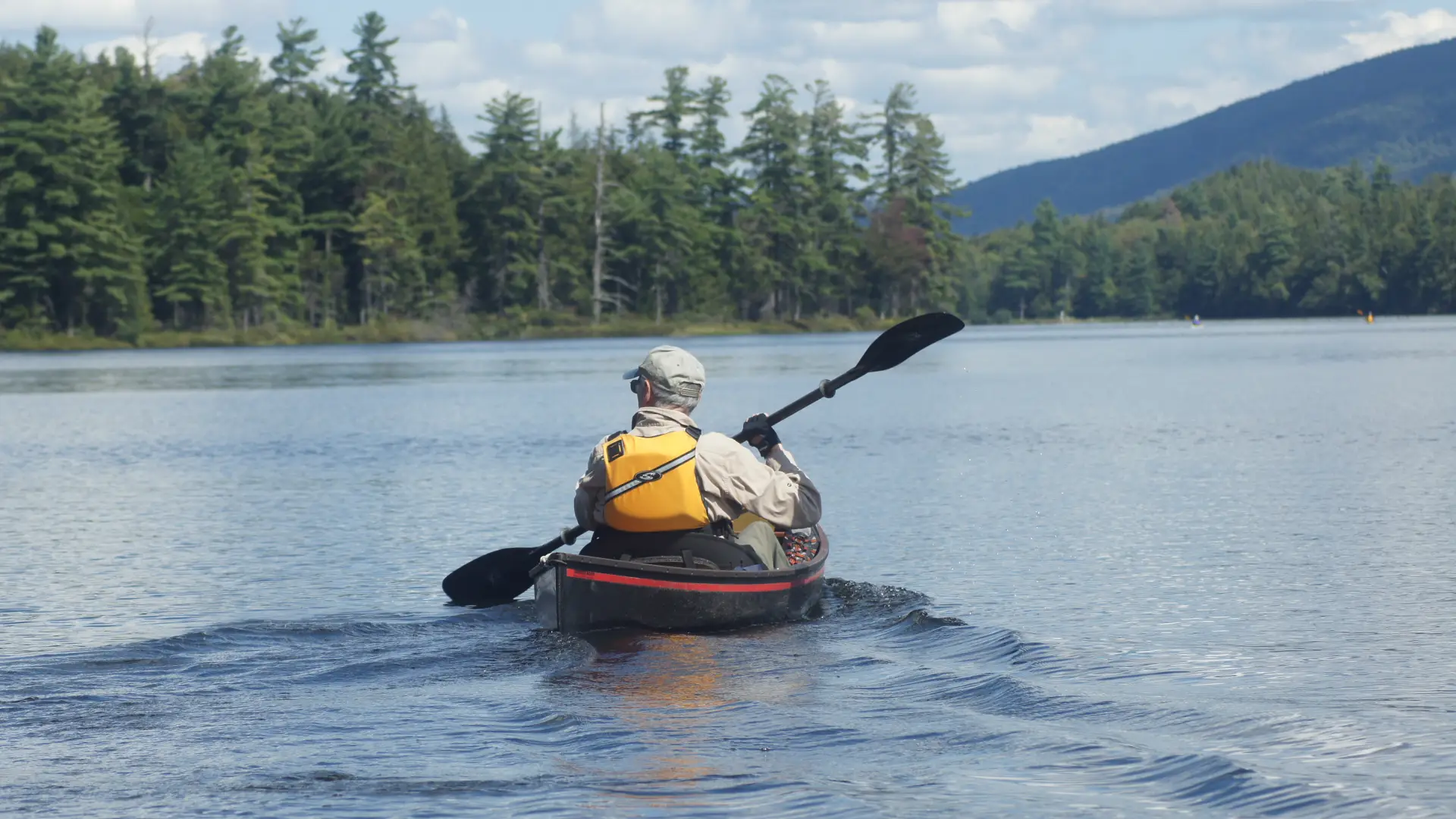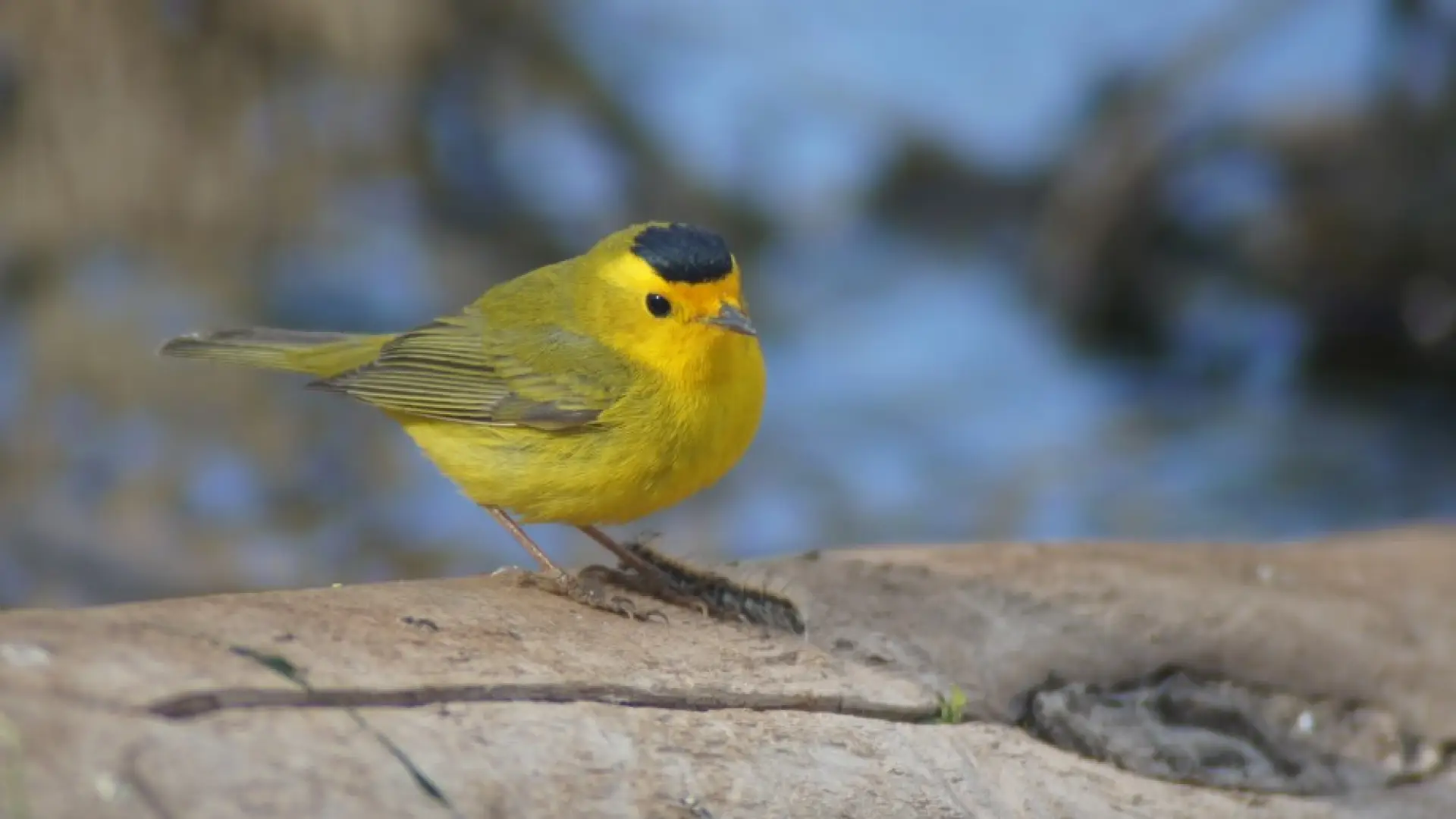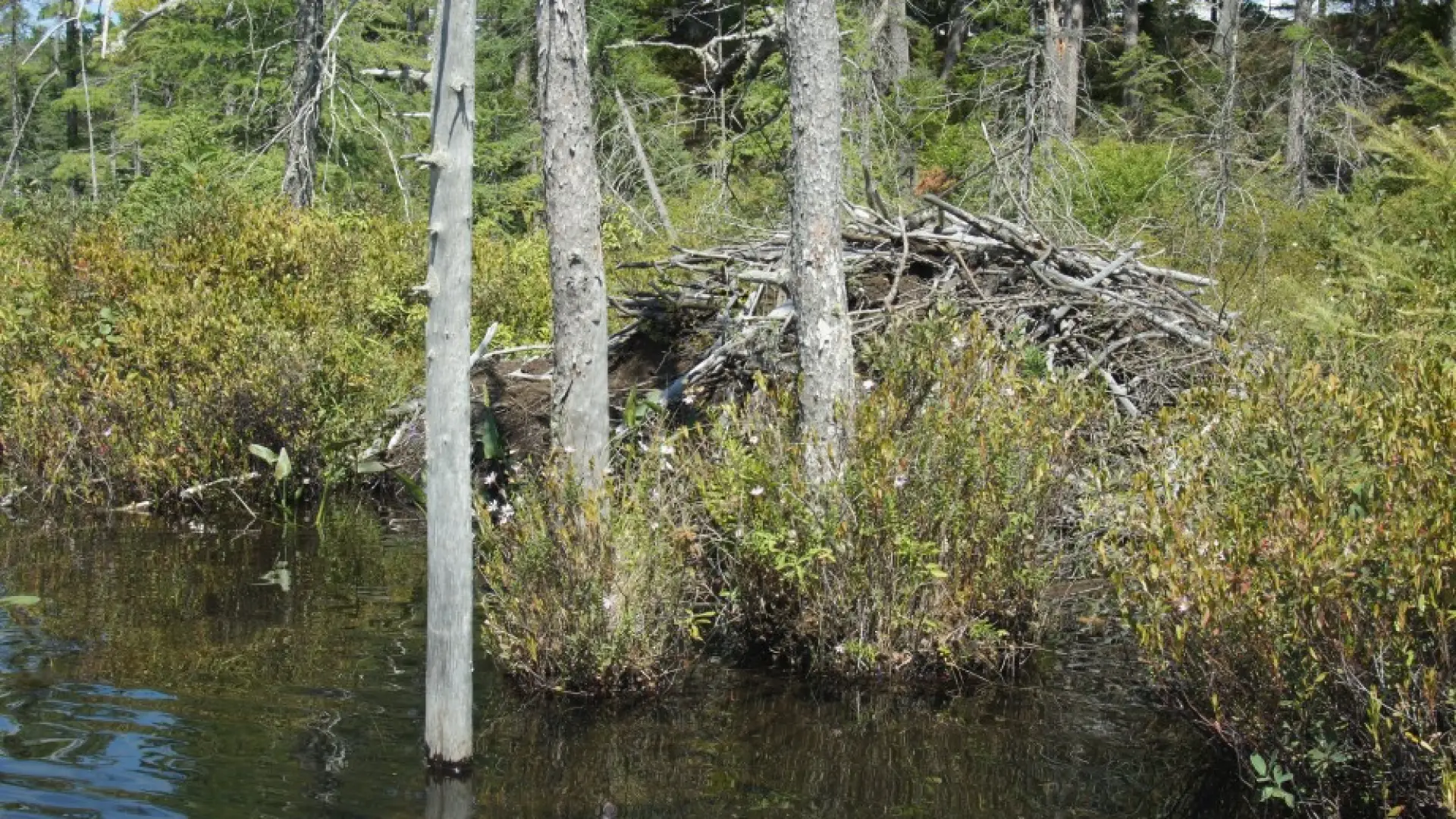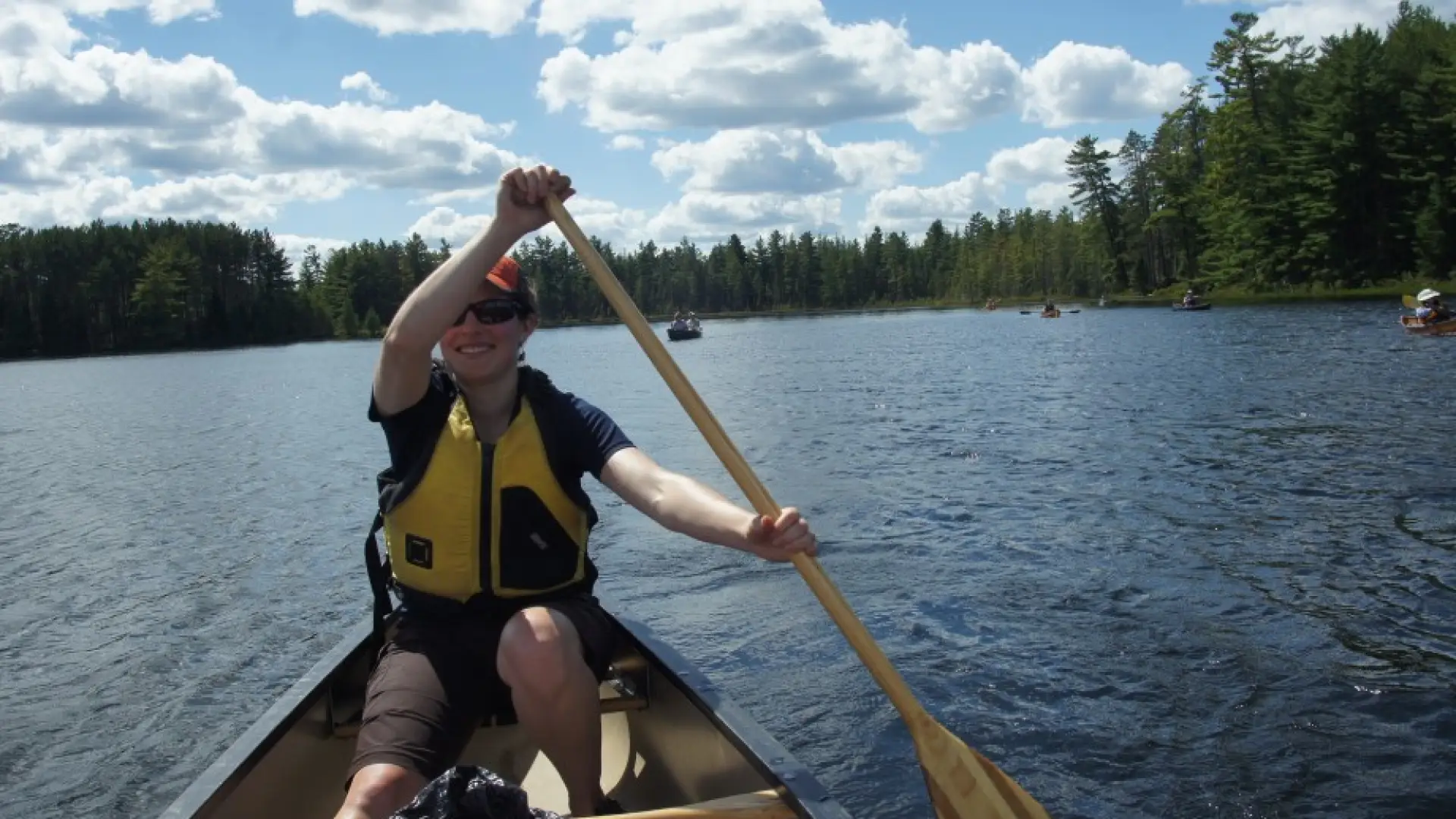
Massawepie Lake is a beautiful gem nestled west of the Village of Tupper Lake. It does not receive the boat traffic that many more popular lakes get, and its lack of motors make it a great lake for quiet exploration.
The lake is owned by the Boy Scouts who run a large camp during the summer. The Boy Scout properties are under a conservation easement with the state, meaning that the general public is permitted to paddle and hike on their property – with the stipulation that Boy Scout lands are off limits during the summer when the camp is in session. As such, Massawepie Lake opens for general use on September first, and that very day Kendra and I helped lead a Wild Center canoe trip on its waters.
We met everyone at an easy-to-find location along the road through the scout camp to allow us all to group up. While waiting I explored a wet brushy area with my binoculars and found a great blue heron and a group of warblers – the highlight of which was a Wilson's warbler. Named after Alexander Wilson, who is often called the father of American ornithology, Wilson's warblers are slender yellow and green warblers (the male sports a black cap) that head further north of the Adirondacks to breed. There are a few records of them breeding in the park, but this bird was almost certainly a migrant heading south. They are also generally more common in the western U.S. as well.

The boat launch was just down the road from where we met and offered easy access to the lake. We were soon on the smooth waters. And what crystal waters they were! The water was clear and calm, and in many places the lake was quite shallow so we could see the bottom, making it good for swimming and perhaps snorkeling (I'll have to make a return trip).
We paddled to a Boy Scout beach and boat area where an educator from the Adirondack Museum discussed the site where an enormous hotel was built and run by Addison Child (for whom Childwold is named) in the late 1800s. We continued on, spotting belted kingfishers and turkey vultures as we poked along the shore.
Massawepie is small enough for an easy paddle, but large enough for some fun exploration in its many coves – particularly if you want to check them all out. One such cove is near the campus of St. Lawrence University's semester program where we stopped briefly. After chatting with a couple students, we explored the boggy edge near where the Grass River exits the lake, and where beaver lodges dotted the shoreline, accented by the pale violet of bog aster. The water edge was also lined in places by sundews – tiny insectivorous plants that trap insects in their sticky leaves. Eating insects helps them supplement their diet so they can live in nutrient-poor conditions, and many of these sundews were living on floating logs, not the most nutrient-rich environment.

We retraced our strokes and then headed across the main expanse of the lake toward the put-in. You could loop the lake more than once if you chose, but we completed our paddle so we could take a brief trip further down the dirt road to see the bog mat of Massawepie Mire, the largest peatland in the state, and a great place for birding if you have the time. Sadly we did not have time to go birding, but the bog is not to be missed on any paddle on the lake.
